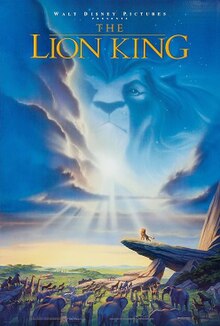Tutorial Question: Name your favorite television and film. Explain how the film or television could shape a person's identity.
Week 9 was the study of cinema and television. The most favorite television series is Pokemon and most favorite movie is Lion King. What does this television series and movie have in common? The main hero or main character has the motivation to be the best and to be respected by others, also went through a lot of challenges trying to be the best. This the knowledge of a person who is able to relate to the movie or television series. This knowledge is known as "cultural literacy". Schirato and Yell (2000), said that "cultural literacy can be defined as a knowledge of meaning systems and an ability to negotiate those systems within different cultural contexts. It is virtually impossible to describe and analyse what is happening in any communication context or practice without using the concept of cultural literacy."
This is where Semiotics is applied. Inskip, MacFarlane and Rafferty (2007), stated "semiotics involves the study of signs and formalises an attempt to establish the meaning of these signs." In other words, with semiotics, the person able to study the signs that he or she could see in the the movie or the television and make a meaning out of it. This is called connotation, what the sign represents. With the audience having the ability to connote what the character in the television or movie is representing, he or she have the tendency to relate to those characters and have the tendency to follow the traits of identity of the characters.
Another way where film and/or television able to shapes a person identity is by the influence of the characters in the movie or television series. For example, Pokemon, the hero is Ash Ketchum. At the starting of the series, Ash started out with only one pokemon and literally less knowledge of the pokemon world and his target was to be the best in the pokemon world. This determination that is being showed will influence the audience on having the same type of identity.
This is actually called "cultivation theory". Shanahan and Morgan (1999), stated that "this simple hypothesis- that watching a great deal of television will be associated with a tendency to hold specific and distinct of reality, conceptions that are congruent with the most consistent and pervasive images and values of the medium- may, at first glance, appear to be so thoroughly reasonable and self-evident that one may be tempted to wonder what all the fuss is about." There is also the modeling theory, where Pederson, Miloch and Laucella (2007), state that it is where "the audience member model their behavior on actions viewed on television, listened to on the radio, read in the newspaper and magazine, or any other way they receive messages from the mass media." In short, modeling theory is when the audience is copying the behavior of the characters.
In conclusion, the film and/or television are able to shape a persons identity due to its influence. Where the audience who have the cultural literacy to understand the television series or show, will copy the behavior or identity of the characters and be one with it, due to its knowledge of the characters.
Reference list:-
Inskip, C., Macfarlane, A. & Rafferty, P. (2008). Meaning, Communication, Music: towards a revised communication model. Journal of Documentation, 64(5), 693.
Pederson, P. M., Miloch, K. S. & Laucella, P. C. (2007). Strategic Sport Communication. United State: Human Kinetics
Shanahan, J. & Morgon, M. (1999). Television and its Viewers: Cultivation theory and Research. United Kingdom: Cambridge University Press.
Shirato, T. & Yell, S. (2000). Communication and Cultural Literacy: An Introduction (2nd ed.). Australia: Allen & Unwin.
Solomon, R. C. & Higgins, K. M. (2010). The Big Question: A Short Introduction to Philosophy (8th ed.). USA: Wadsworth.


No comments:
Post a Comment